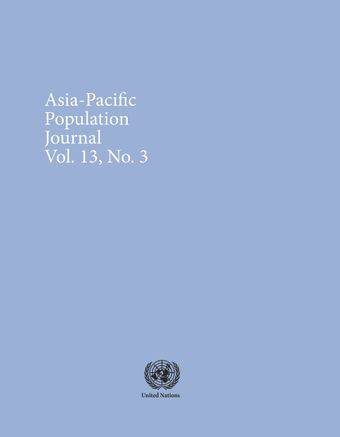-
The social and demographic correlates of divorce in rural Bangladesh
- Source: Asia-Pacific Population Journal, Volume 13, Issue 3, Jul 1998, p. 1 - 11
-
- 17 Jul 1998
Abstract
Divorce is one of the processes of marriage termination and normally carries with it the loss of the potential for reproduction. The degree to which the reproductive life-span will be affected depends on how long the divorced woman remains outside of a conjugal relationship and on whether or not she remarries. Because a large proportion of divorce occurs at the younger ages in Bangladesh, the time spent in the divorced state may have a considerable impact on fertility. As suggested by Shryock and Siegel (1975), divorce statistics can be applied indirectly in fertility analysis. Davis and others (1956) recognized the changing structure of the family, the entry of women into labour force, and an emphasis on personal gratification as products of urbanization and industrialization. However, their outlook has little relevance in a non-industrialized society such as Bangladesh. According to Malaysia’s 1970 census, the incidence of divorce is greater in rural areas than in urban areas (Jones, 1980). Similarly in Bangladesh, the divorce rate is higher in rural areas than in urban areas for every age group (Ahmed and Chowdhury, 1981). It is widely believed that the presence of children in a family deters divorce in all societies. According to Jacobson (1950), three-fifths of divorced couples in the United States of America had no children. Reyna (1979) found that 49 per cent of the women divorced were without children.





